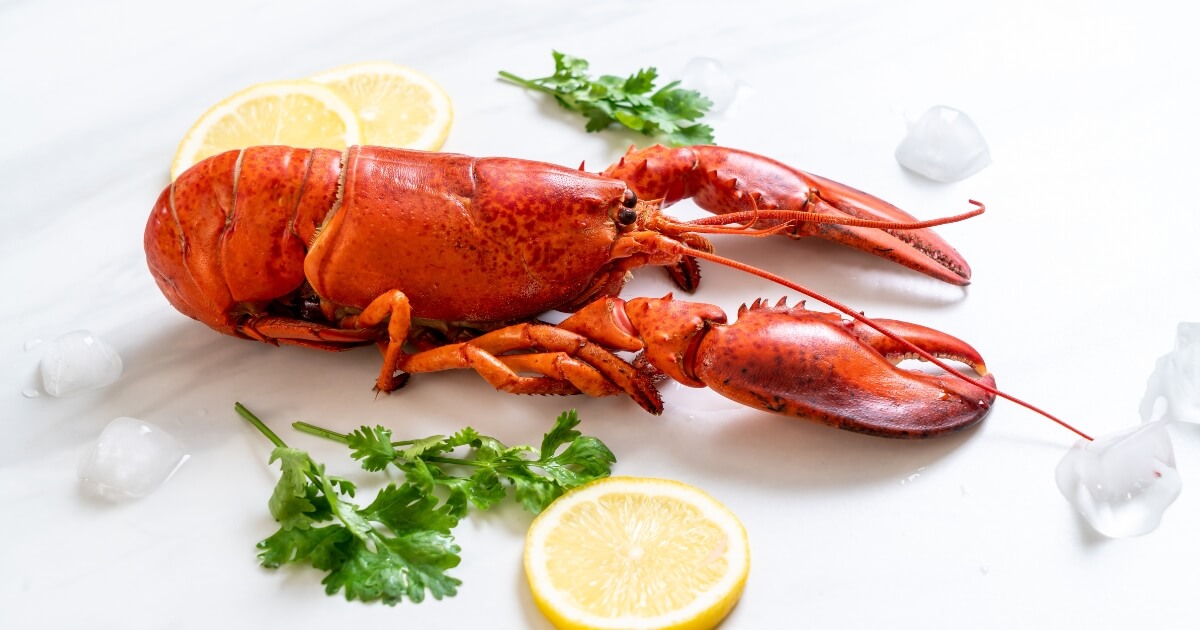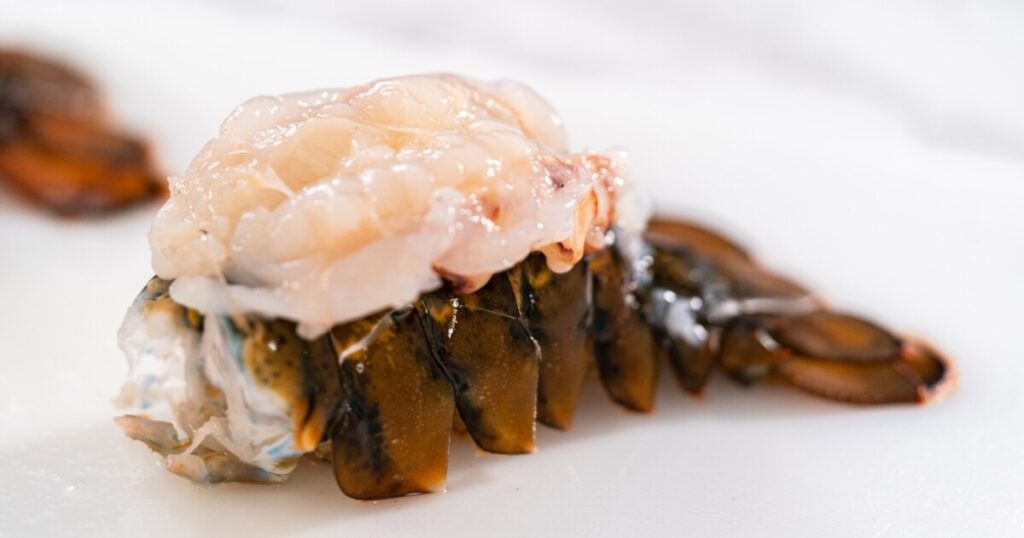Lobster has its peak moments and can quickly become dangerous to eat. So, how do you spot a lobster that’s gone bad?
The first red flag is an off-putting smell. But there’s more to it than just giving it a sniff. Sometimes, it’s a change in color or a texture that’s just not right.

In this guide, I’ll share with you the ins and outs of spotting a bad lobster, from the obvious signs to the subtle cues.
How To Know If Lobster Is Bad
What Does A Fresh Lobster Look Like:

- Live Lobster: It’s lively with a vibrant deep blue or greenish hue, always on the move when touched, waving its antennae.
- Raw Lobster Meat: It’s creamy white and smells just like the sea.
- Cooked Lobster: Think bright red shell and white and succulent meat. Every bite should remind you of that seaside vacation.
What Does A Bad Lobster Look Like:
- Live Lobster: If it’s more on the lazy side and not moving much or at all, that’s a red flag for any type of lobster.
- Raw Lobster Meat: If it gives off a slimy feel or has that ammonia-like smell, it’s best to steer clear.
- Cooked Lobster: If the color looks off or the meat’s gone soft, it’s past its prime.
If you’re wondering about the best ways to store lobster or how long it stays fresh, you might want to peek at my guide, “How long does lobster last?” It’s got some handy tips to help keep your lobster fresh!
How To Know If Lobster Is Bad
Smells Fishy Or Like Ammonia
The aroma of your lobster is often the first hint about its freshness.
When you think of lobster, you should be reminded of that clean, ocean-like scent, almost like a day spent by the sea. And freshly cooked lobster should have a mild, sweet aroma.
If your lobster’s scent strays from this, it’s a sign to be cautious.
Such odors, like being overly fishy or an ammonia smell, typically arise from decomposition or bacterial growth. It’s a sign of the breakdown of proteins and fats and something you want to steer clear of.
You probably think that freezing is a surefire method to keep lobster fresh, but if it smells off upon thawing, it might indicate it was already off when it was frozen, or it had spoiled by the time it thawed.
I know after all the effort you put into cooking a lobster, detecting any strong or sour odors can be disheartening. But if the cooked lobster doesn’t smell right, it’s safer to skip eating it and avoid using it in your recipes.
Discolored Meat
For raw lobster meat, if you notice it turning gray or spotting with dark patches, it’s often due to oxidation or bacterial growth.
If you’re working with frozen lobster, look for signs of freezer burn or the presence of ice crystals.
These can indicate improper storage or that the lobster has been frozen for too long or, worse, thawed and refrozen. The taste and texture can be affected, making it less than ideal for your dish.
Slimy or Unusual Texture
When handling your lobster, the feel of the meat can tell you a lot about its condition. Fresh lobster should have a firm yet tender texture. If it feels off, it’s time to take a closer look.

Raw lobster meat that’s started to feel slimy to the touch is often a result of bacterial growth on its surface. There are no hard and fast rules here, but you should avoid using it if you’re unsure. If you’re seeing multiple signs, it’s definitely a no-go.
Cooked lobster should have a consistent texture throughout. If you find the meat resembling the consistency of cottage cheese, it’s a red flag. It’s a clear indication of spoilage and a sign to avoid it.
Limp or Non-Moving
The vitality of a live lobster is a key indicator of its freshness.
A fresh, live lobster will typically react when handled. It might try to flap its tail or move its claws and walking legs.
I remember once heading to a local seafood market, and the lobsters there were so lively they almost seemed eager to jump out of the tank. That’s the kind of energy you want to see in a fresh lobster.
However, if you come across a live lobster that’s limp or not moving, it’s a cause for concern. A non-moving lobster might be dead or on its way out. If the lobster seems lifeless, it’s best to avoid cooking it.
What Happens If You Eat A Bad Lobster?
Beyond the disappointment of wasted food, money, and effort, consuming bad lobster can have some unpleasant consequences for your health.
One of the first things you might experience after eating bad lobster is food poisoning. Symptoms can kick in within hours, including nausea, vomiting, diarrhea, abdominal pain, and sometimes fever.
Sometimes, the symptoms can be quite severe, leading to dehydration. So, if you suspect you’ve consumed spoiled lobster, staying hydrated is essential.
If the symptoms persist or are severe, you need to seek medical attention.
And in the future, always give your lobster a good once-over before cooking. A little caution can go a long way in ensuring you enjoy your seafood feast without any hitches.
Bad Lobster FAQs
Are dead lobsters safe to eat after cooking?
If a lobster was alive just before cooking, it’s generally safe to eat. However, if it was dead for a long period, or you’re unsure, before cooking, it’s best to avoid it.
Can a spoiled lobster be life-threatening?
Consuming spoiled lobster can lead to food poisoning, which, while typically not life-threatening, can be severe in some cases. If symptoms are intense or prolonged, seeking medical attention is essential.
Why does my lobster taste like ammonia?
An ammonia taste in lobster is a sign of decomposition. It’s a result of bacteria breaking down the meat, and it’s a clear indicator that the lobster is past its prime and should not be consumed.
Is mushy lobster safe to eat?
Mushy lobster meat can be a sign of spoilage or overcooking. While it might not be harmful, the texture and flavor won’t be at their best, so it’s better to trust your instincts and avoid eating it.











